12 Wildlife Photography Tips For Your Next Photographic Safari
A dedicated photographic safari is different from a regular safari. Of course, you will get some great photographic opportunities on a regular safari, but more serious photographers will want to consider a specialist photographic safari, dedicated to wildlife photography. This is a bit of a niche market and there are companies who specialise in offering photographic safaris, often with a professional photographer as host and coach. But even without a professional photographer as host, you can have a fantastic photographic safari with a bit of careful planning and these handy tips.
1. Choose the right season and destination
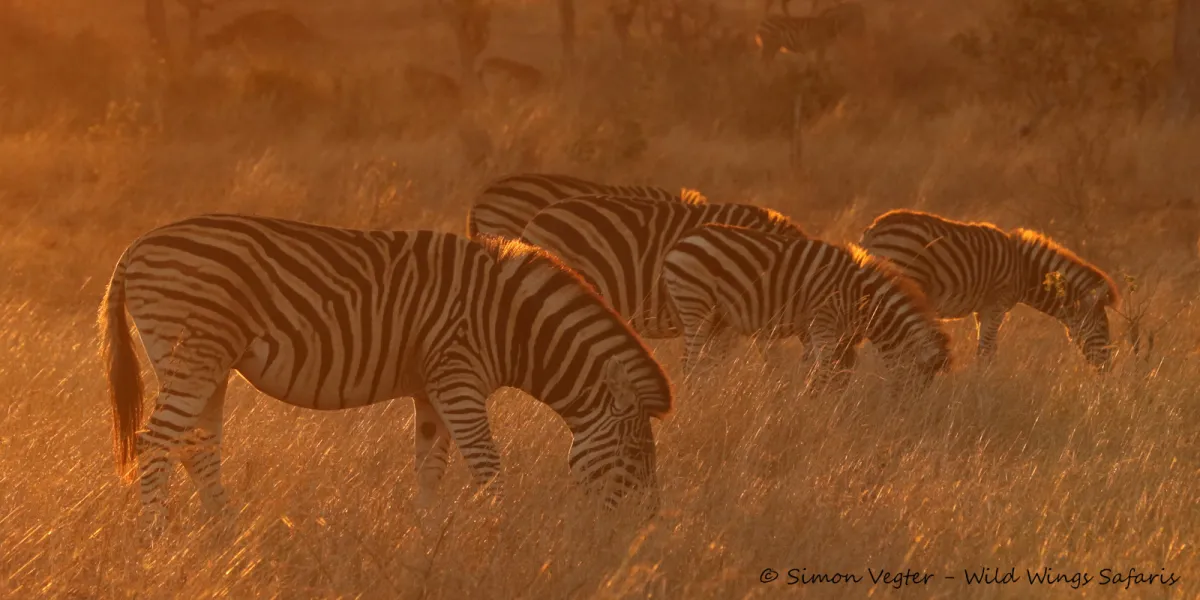
The dry season is great for photographing wildlife
To have great opportunities for wildlife photography, you need to go somewhere where you can expect great sightings. Choose a safari destination that is known for offering consistently good game viewing. If you are hoping to photograph specific animals, such as wild dogs, cheetahs, leopards, rhinos or elephants, get some advice on where the best destination is to see that particular animal (or keep your eyes on our blog, as we will cover this in a future post). Keep in mind that in most national parks and government game reserves, vehicles are not allowed to leave the roads. In private concessions or on private game reserves, game drive vehicles are able to go off-road which allows you to get closer to the animal and easily find the best position and best light on the subject. Generally, the best season for wildlife photography is the dry season, when the bush is open and visibility is good, many animals congregate at waterholes and the dusty air provides warmer lighting and some great sunsets. Having said that, perhaps you are hoping to photograph birds, flowers, dramatic clouds or thunderstorms, or prefer a more colourful background of lush green bush. If so, the rainy season may be a better option, and also provides some excellent photographic opportunities.
2. Bring the right equipment
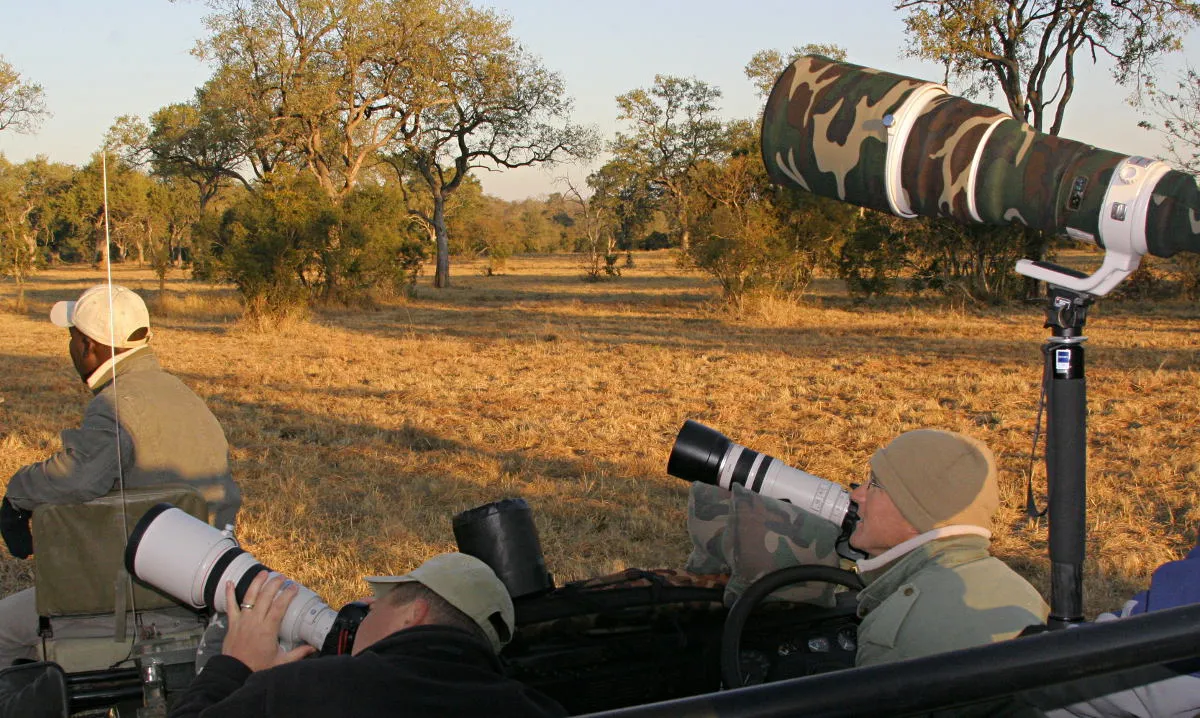
Tripods, monopods or beanbags are essential to avoid camera shake
Your results will only be as good as your equipment. For wildlife photography, you will need a zoom lens or telephoto lens, the most popular range being anywhere between 200mm and 500mm. Anything less than 200mm and you will often find that the subject is too far to get a decent shot. Bigger than 600mm is likely to be too bulky and cumbersome to carry around, and camera shake becomes an issue. If you don't want to bring all your own equipment, why not rent professional equipment for your trip? Choose the best quality lenses you can afford - a fast lens is one that allows you to have a very wide aperture, which lets in more light and allows you to shoot at higher shutter speeds. To avoid blurry images due to camera shake, bring a tripod, monopod or beanbag. Find out in advance what kind of vehicle clamp or mount can be used. The bush can get quite dusty at times. Use a Pelican case or other similar dust-proof protective case for your equipment.
3. Book a private vehicle
Sharing a vehicle with other guests who are not photographers is a recipe for frustration. Apart from having little space for your equipment, the other guests might move around while you are shooting, and will want to leave the sighting to go find the next animal when you are still getting excellent shots, or patiently waiting for some action. The best way to ensure total flexibility and freedom to focus on photography is to book a private vehicle for all your game drives, with no other guests onboard. It will cost extra, but it is worth the extra cost. Ask about flexibility with regard to game drive times and the option to depart earlier or stay out longer if necessary.
4. Communicate with your guide
If you have not booked a photographic guide as host, your driver-guide will be key in making your photographic safari a success. Don't expect that the guide will know your requirements as a photographer. Communicate your expectations, let him know what kind of shots or animals you are looking for, explain which direction you need the light to be, and tell him exactly where you want him to position the vehicle.
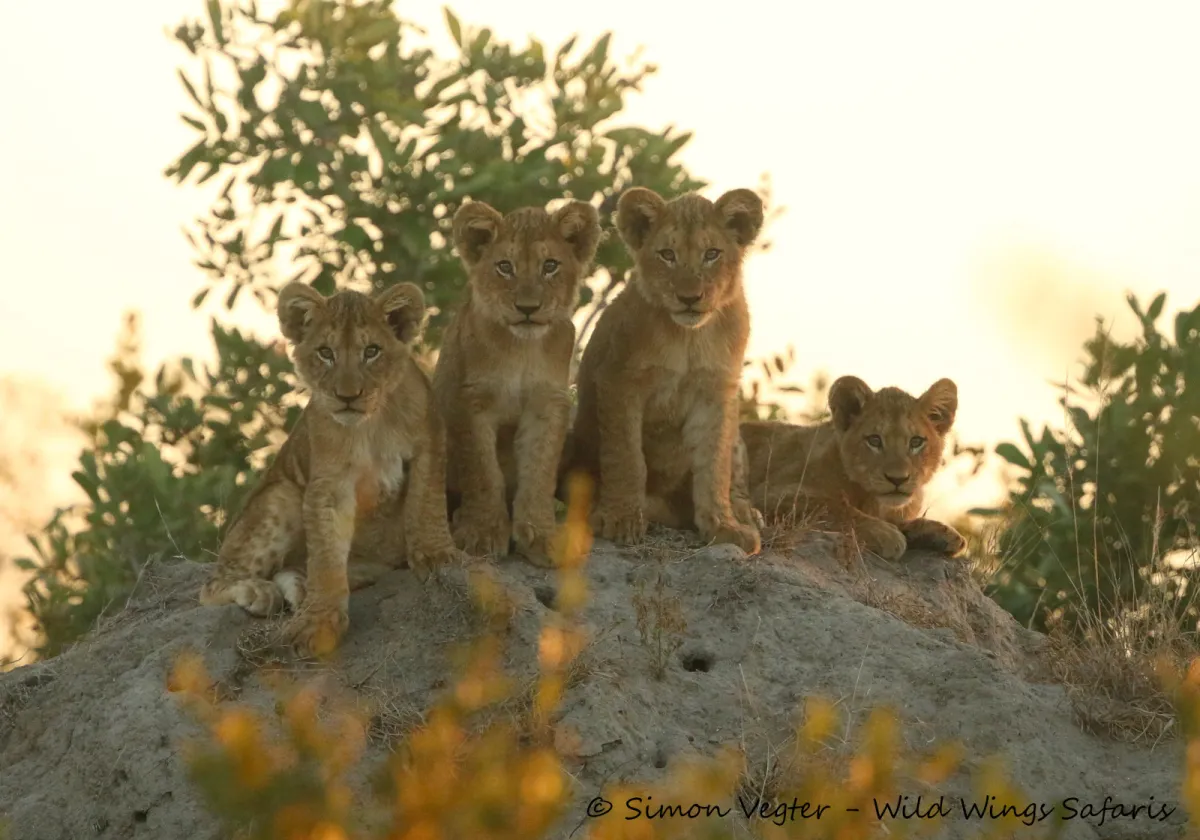
Let your guide know what kind of shots or animals to want to photograph
Ask him to help you anticipate the animal's movements and behaviour. For example, most guides would know that when a lioness approaches another lioness of the same pride, they are likely to rub heads and show mutual affection as soon as they meet, so you can anticipate the shot. If the guide follows a leopard down a track and you're only getting tail shots, ask him if there is a way to drive around to wait for the animal up front, so you can get some headshots as the animal approaches the vehicle. You may have to remind him to always switch off the vehicle at sightings and not start it without asking you first. Guides don't always think like photographers.
5. Know your equipment
It's important to know how your equipment works before you go on a photographic safari. Get to know your buttons and settings, make sure you know how to lock focus or exposure, how to change lenses and settings quickly, how and when to change your ISO, etc. On safari, Murphy's law for photographers says that the best action will happen while you are fiddling with your settings, trying to figure out your camera. If you are going to rent a camera body, don't rent an unfamiliar body. Don't buy a new camera body a few days before your safari, and use your expensive photographic safari to get to know the settings and buttons. Rather buy it several months before your trip, and take time to test it out and get to know it well.
6. Be ready to shoot
The biggest difference I have seen between amateur photographers and professional wildlife photographers on safari is that the professionals always have their settings right and are ready to shoot at a moment's notice. When a cheetah bursts out of the bush at full speed, chasing an impala, the professionals aim and start shooting, while the amateurs are still taking off lens caps, changing ISO settings and fiddling frantically with their cameras.
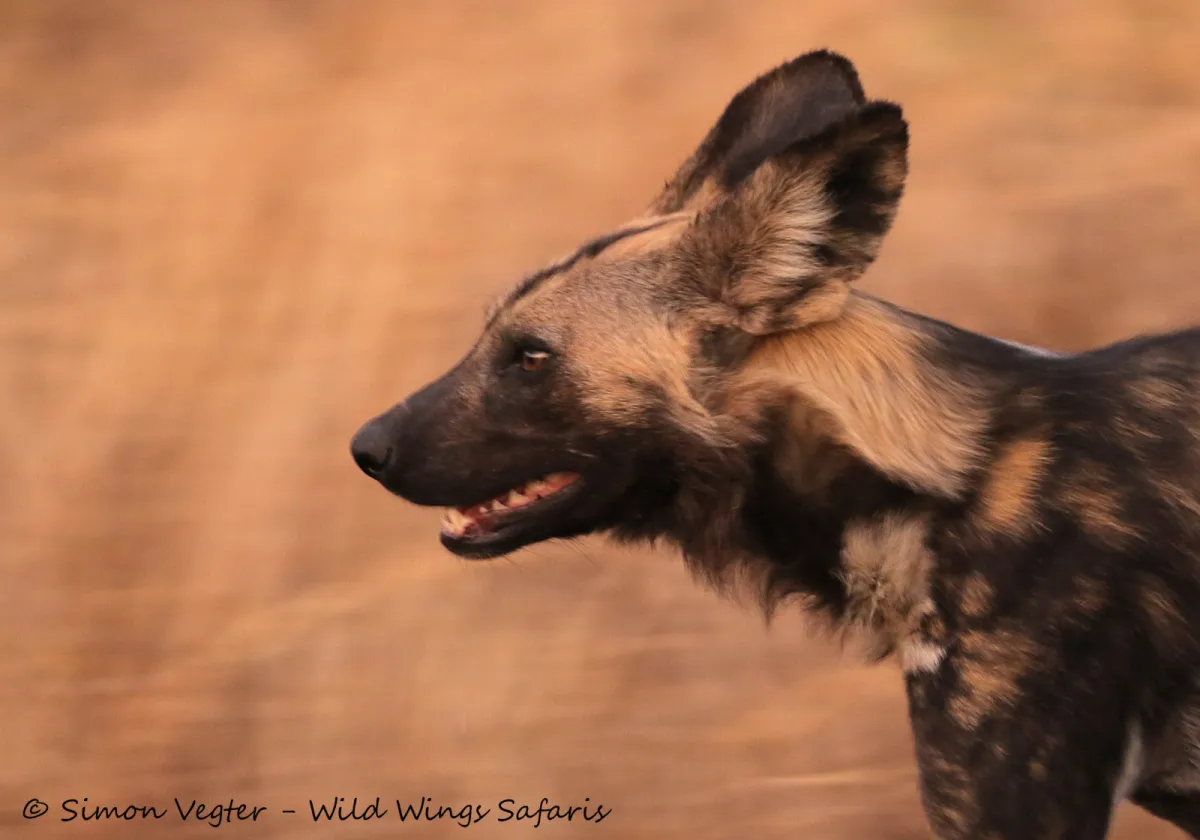
Always be on standby and ready to shoot
By the time they are ready to shoot, the action is over. You need to have your settings right and anticipate the shot. Be aware of the ambient light conditions and adjust your settings accordingly, in advance.
7. Basics: Get it sharp
If you get the basics right, you will have better results. To get your photos pin sharp you need to get three things right: focus, aperture and shutter speed. Be conscious of the focus point and auto-focus settings, and focus on the most important part of the subject (usually the eyes, but not always). If you use centre point focus, know how to lock your focus so you don't lose the focus when you recompose. Understand how your f-stop or aperture affects your depth of field. At a very wide aperture (low f-stop) the depth of field is so narrow that you may find your subject's eyes are in focus, but the nose and ears are soft, or you lose texture on the neck and shoulders. But if you choose a higher f-stop, your shutter speed will be slower and you may lose sharpness due to camera shake or subject movement. For beginners, finding the right balance to ensure your photos are always sharp is a skill you may want to practice at home before you depart on your photographic safari.
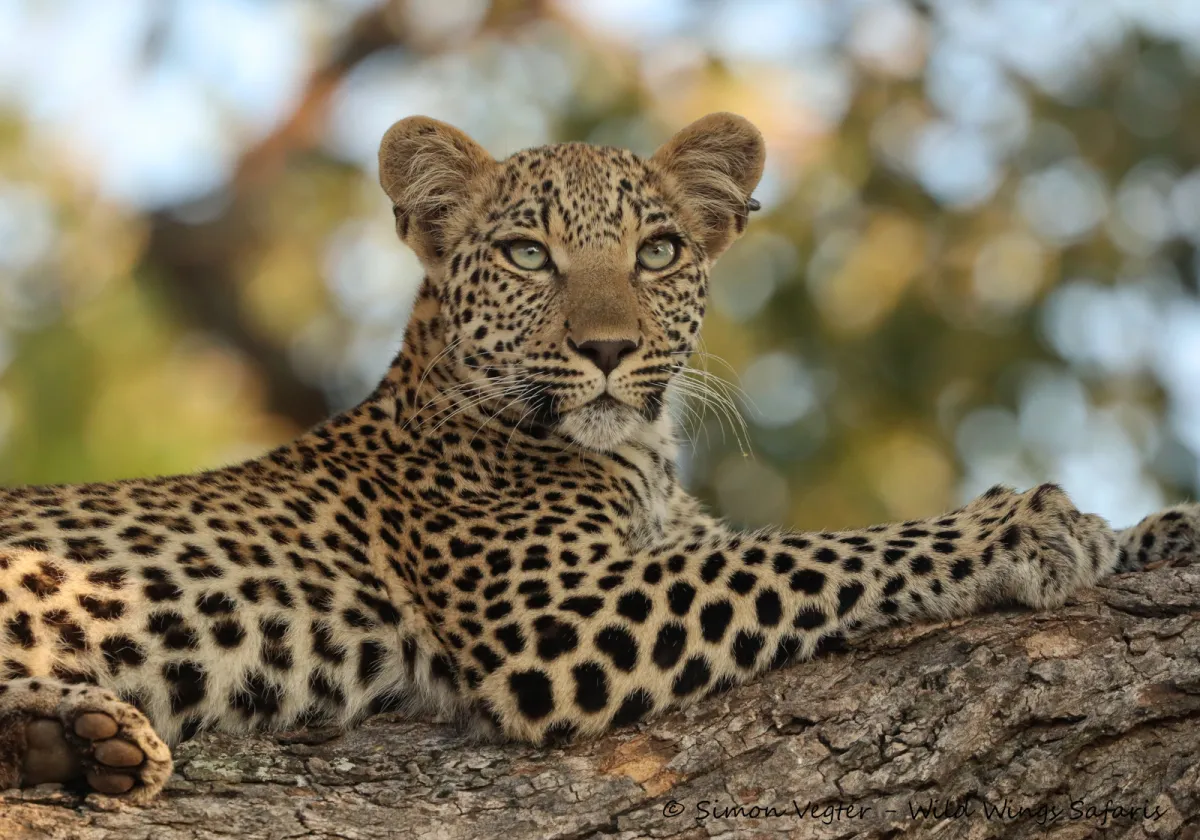
Focus on the most important part of the subject
8. Basics: Composition
Another basic skill to learn for beginners is composition. For starters, ensure that you get your whole subject in the photo. Avoid cutting off the tail, legs, or horn tips. Don't zoom in too close. Rather take a wider shot and crop later. Most cameras today have such high resolution that you can easily crop your shots afterwards to get the desired composition. Consider the landscape, trees and other animals, and try and find a pleasing balance. Look for leading lines, naturally drawing the eye to the subject. Leave space for the animal to look into, don't crop it so close that your subject is staring right into the edge of your shot, or feels cramped.
9. Basics: Exposure
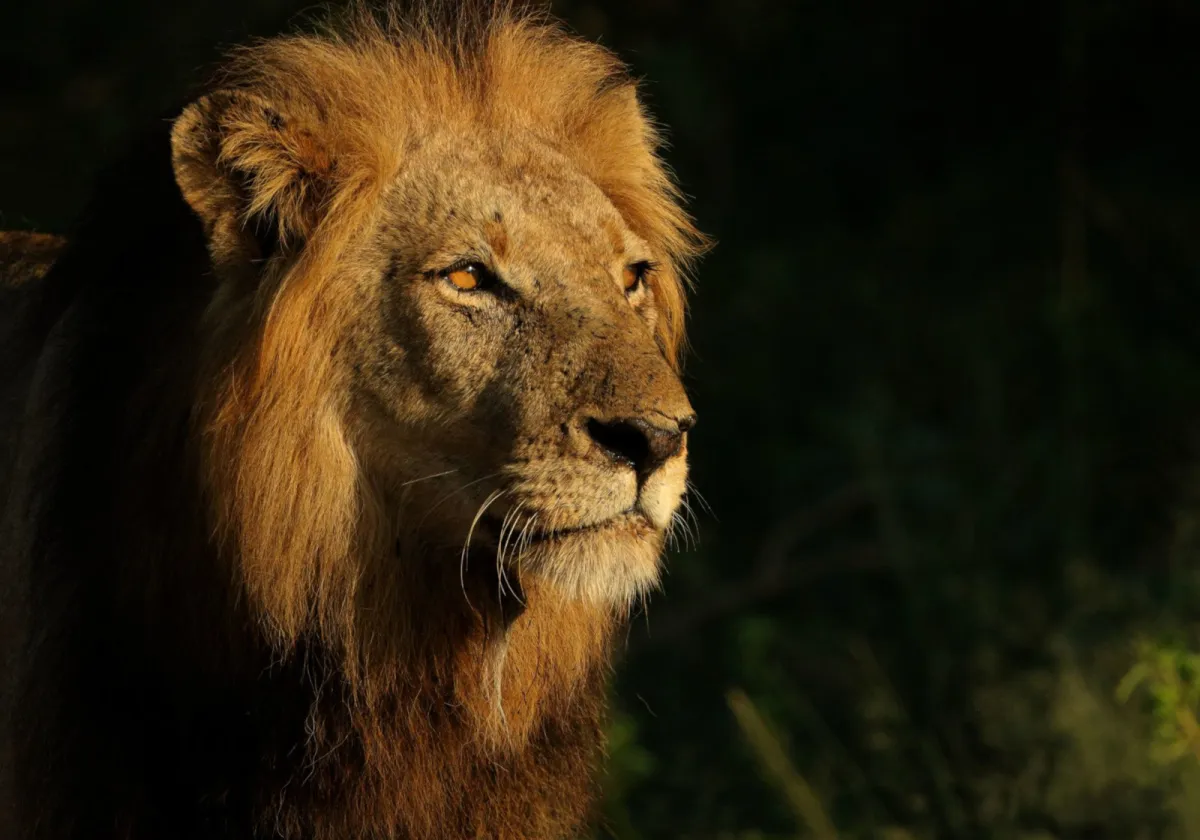
A lion portrait
Expose for the most important part of the photo (usually your main subject, but not always). Make sure you know how to use spot metering and lock your exposure. In wildlife photography, it is more common to deliberately underexpose slightly rather than overexpose, as you would do with snow and ice. Experiment with bracketing and remember to check your results often to ensure you can make adjustments if your shots are too dark or too light.
10. Getting the best light
Usually, to get the best light on your subject, you need to have the sun behind you. However, side lighting or backlighting can also provide interesting results. Early morning and late afternoon usually offer the best light conditions for wildlife photography. Make the most of the warm light provided by the early morning and late afternoon sun. This means you need to be out on your game drive before the sun rises, as the first hour of the day offers the softest light.
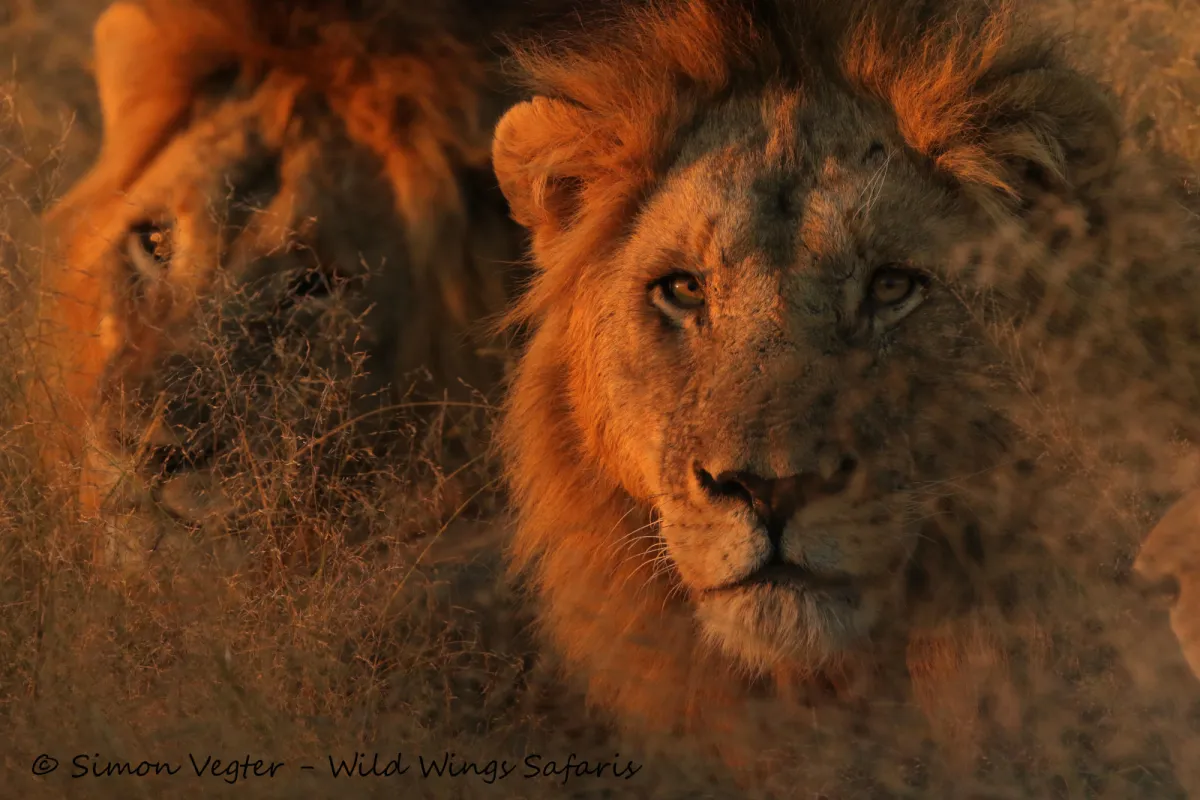
Early morning or late afternoon provides the best light
During the middle of the day, the sun is bright and harsh, and the contrast between sun and shade is usually too much. However, on a cloudy day, you may still be able to get good results in the middle of the day. The colours will be a bit cooler but white balance can compensate for that. If you don't shoot in raw, make sure your white balance settings are correct. If you've always used auto white balance, experiment with different manual white balance settings.
11. Timing
Even the most beautiful animal, posing perfectly in the most beautiful light, can be a bit boring, compared to the shots that win awards. To avoid having a series of nice postcard pictures at the end of your photographic safari, try to capture some action or behaviour that tells a story.
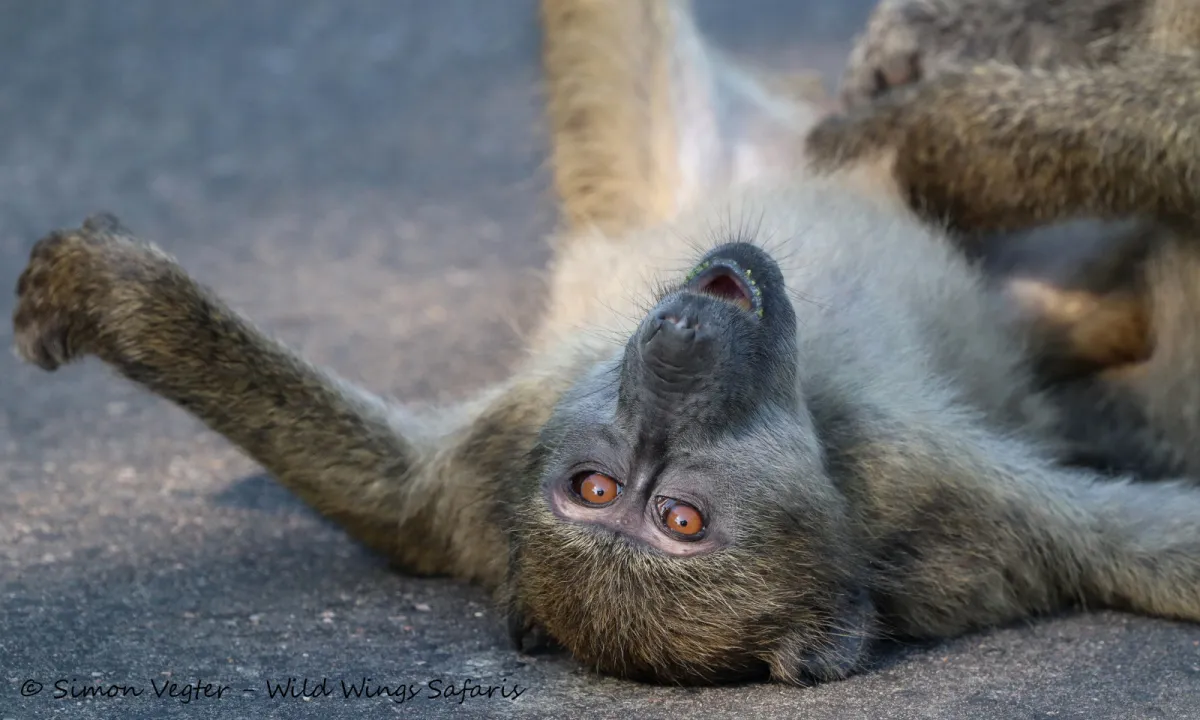
Take an image that tells a story
You need to capture the moment - the mood or movement or emotion. This requires timing, a bit of luck, and some knowledge and anticipation of animal behaviour. Look for interaction, a typical movement like flick of the ear or lick of the nose, or some action associated with feeding, play or hunting.
12. Don't run out of battery power or memory cards
There is nothing worse than sitting at an awesome sighting, photographing a lioness fighting off hyenas at a kill, and then running out of battery power or memory cards just when the best action starts. Bring enough memory cards with you, and always bring your spare cards with you on game drive. Charge your camera batteries overnight and bring spare batteries along on each game drive. Find out about electricity supply at the lodge you have booked at, and remember to bring the correct travel adapter for your charger.
Have you been on a photographic safari? Please share your experiences and add your own additional tips in the comments below.
About the author

Onne Vegter is the managing director of Wild Wings Safaris. He has a deep love for Africa's people, wildlife and natural heritage. Having travelled extensively to Africa's top safari destinations, his writing is based on his personal travel adventures and decades of experience in the safari industry. Follow him on X at @OnneVegter.









